It is peak harvest time and we can’t possibly eat all the magnificent produce that is picked at the moment. You may be asking yourself: “Should I buy a dehydrator? I could make so many awesome vegan snacks!” You are right. But there are also some significant downsides to owning a dehydrator. I myself have purchased a second-hand 9-tray Excalibur about two years ago, and I (mostly) love it, although sometimes I have second thoughts. In this post, I will talk about how I went about buying a dehydrator, what I use it for as a vegan, and whether I would do it again. I have asked a few other vegans for their insight, too, and some have generously shared recipes for you to try… if you decide to go ahead and buy a dehydrator.
This post does NOT contain affiliate links. I will NOT make a commission if you buy a dehydrator or anything else. I strongly believe that most people have enough and do not actually need more stuff in their lives… and if they do, those items can almost certainly be procured second-hand from a relative, friend, thrift store, or classified ads such as Craigslist.org or Facebook Marketplace. In the case of dehydrators, they are common finds on the used market… which should give you a hint that they aren’t a good fit for everyone. Read on!
What dehydrator to buy?
My first dehydrator was an impulse purchase at a thrift store. It was a model with round stackable trays. I immediately filled it with banana and strawberry slices upon coming home. It turned out to be a dud: there was no temperature control (and it seemed to be running very hot), I didn’t like the circular trays that made it hard to make fruit roll-ups without special parchment sheets I would have to order online, and it was extremely noisy. But the kids gobbled down those first dried strawberries and asked for more, so I started researching my options.
I knew I wanted a rectangular dehydrator with slide-in trays, and based on reviews I though I should go for a bigger model. Only a couple of leaves of kale would fit in the smaller units!
A friend owned an Excalibur dehydrator with 9 trays – the model I was thinking of buying – so I asked her to give me a demonstration. I was concerned about noise. Well, it was a bit noisier than I would have hoped (albeit not as loud as that thrifted one!) but she offered to sell it to me for less than half what she had paid for because it was gathering dust in her closet. I quickly accepted and loaded the Excalibur in the trunk of my car before she changed her mind!
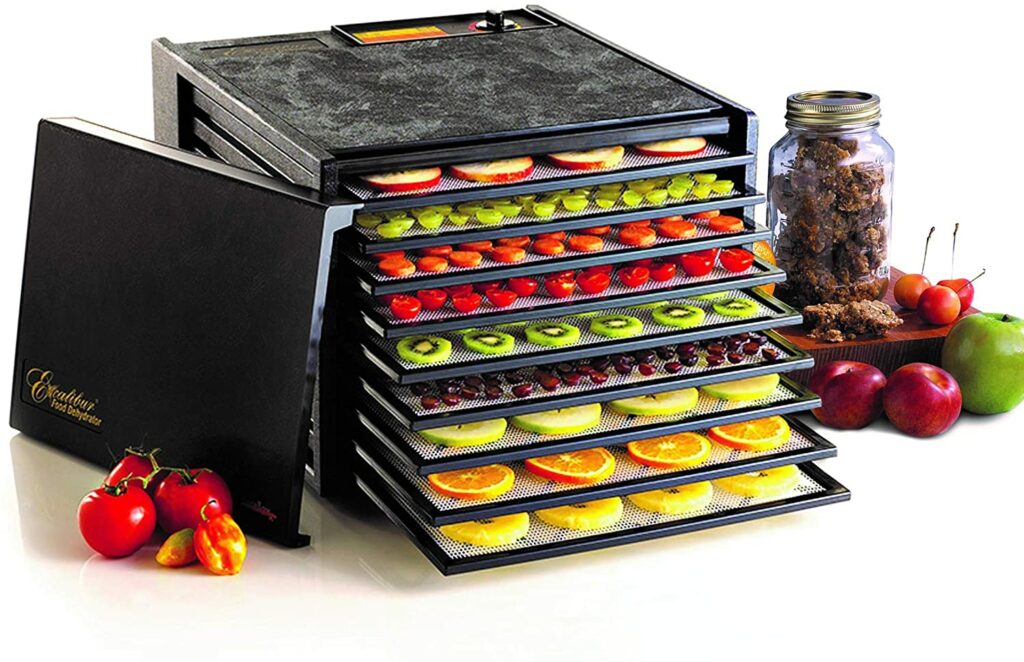
If I was to do it again, I would choose the Excalibur 9-tray in a heartbeat. The square trays are practical, the temp control and fan are important features, and there’s room for a lot of food in there. Jessica, another vegan mom in my neighborhood, bought the Excalibur 5-tray, and regretted not going bigger: ” I did a lot of research and ended up with a 5 tray Excalibur. Within a few weeks I realized I should have gotten the 9 tray, with a clear window – because who doesn’t peak?!” But a smaller unit may be sufficient for a single person or a couple. Karina Inkster, fitness coach extraordinaire known for her frank-speaking vegan podcast, is very satisfied with her 6-tray Aroma model. “It’s been fantastic for many years, so I’d definitely recommend it. Great price, great functionality, no issues.” But keep your eyes peeled, because you may find Karina’s unit on Craigslist sometime soon: “Now that I make fruit leather so often, I would love a 12-tray dehydrator instead of 6 trays!”
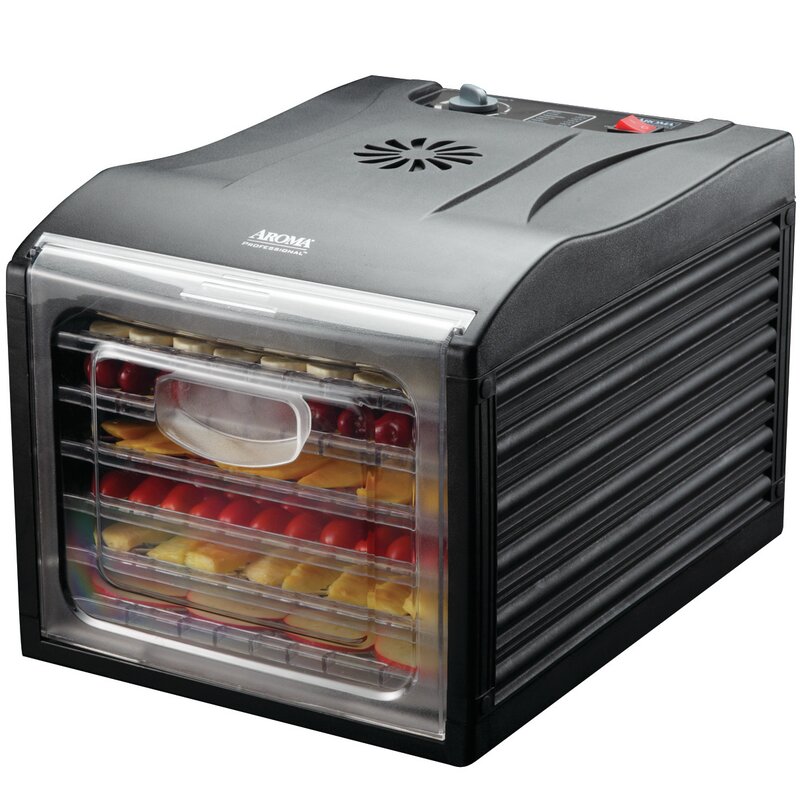
Excalibur also makes a model with stainless steel mesh trays. As much as I dislike plastic, it would not be worth the higher price tag for me, because as an exclusive plant eater I only need to operate my dehydrator at a low temperature (rarely over 125 degrees Fahrenheit). At such a setting, I am not concerned about plastic leaching into my food.
Round models such as those by Nesco and Salton are not necessarily bad. They are far less expensive than the box ones, and easier to store out of the way. If you choose to go down that route, make sure to get one with a temperature regulator, otherwise you’ll be stuck at the preset (which tends to be approximately 160 degrees Fahrenheit – too hot for many delicate ingredients). You’ll definitely want to pay extra for the custom-cut silicone sheets in order to maximize your investment, and possibly buy a few extra stackable trays as well.
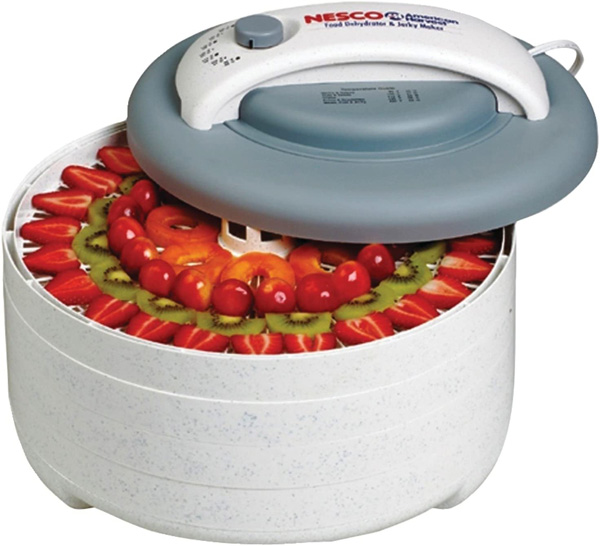
Where is the best place to put the dehydrator?
At the same time as you are asking “should I buy a dehydrator?” you have to ask “where will I put the thing?” If you don’t find the right spot in your home, your affair with the dehydrator might end up being quite short. Here are some considerations you should keep in mind:
- Ease of access: some people keep and run their dehydrator in the garage (or even on a covered porch) so they don’t have to deal with the noise, but then it increases the distance from the kitchen and makes it less likely that it will be used quite as often. Having to walk trays over to the garage also increases the risk of messes when transporting filled tray, especially when making roll-ups from pureed fruit. Finally, dehydrating delicious-smelling food in the garage or outdoors may alert uninvited guests such as mice, raccoons, and bears, that it’s snack time at your house. Of course, you could store your dehydrator in the garage or in a cabinet and pull out when needed… but it would be annoying, and you’ll be far less likely to use it regularly.
- Power: there needs to be a grounded power outlet within a few feet of your appliance.
- Ventilation: don’t plop your dehydrator in a kitchen cabinet and close the door! There has to be plenty of fresh air circulating around it to prevent overheating.
I have seen pictures of dehydrators on top of the fridge… but that seems like a good way to spill food. Plus, some refrigerators get really hot on top, which may damage your appliance.
Our galley kitchen isn’t huge, but the addition of a peninsula four years ago left me with an empty cabinet without a door. At first, I was going to put seldom-used cookbooks, but then the dehydrator came and fit right into the empty spot. There is plenty of space around the appliance, and no door, so it is reasonably vented. And there is an outlet right outside. I see the dehydrator every day and it prompts me to use it to save leftovers for our emergency kit.
If you have a large walk-in pantry immediately next to your kitchen, it might be the best place for your dehydrator. I’m jealous.
What vegan food is best suited for dehydrating?
- Simple dehydrated fruit is everyone’s favorite. Technically the goal is to preserve some of the season’s harvest for the leaner months, but dehydrated morsels of fruit are irresistible and you’ll have to fight to save them until winter. Bananas, strawberries, pineapple, nectarines, mangoes, and oranges are our favorites. Watermelon makes a really special treat, too! Slice thinly (1/4″), spread on the fine-mesh trays, and dehydrate for a few hours at 115 degrees Fahrenheit. Cherries must be pitted and can be halved to accelerate the process. Note that foods that brown easily such as apple slices do better when first dipped in a solution of citric acid first. Your appliance’s manual probably offers valuable guidance here.
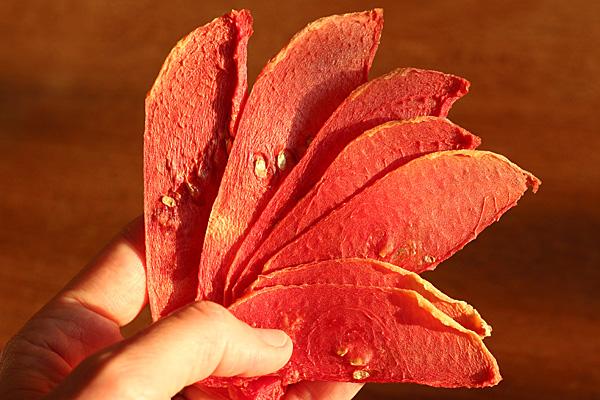
I didn’t know what was missing from my life until I dehydrated watermelon slices for the first time. SO good!!
- Dehydrating vegetables is also popular, but I haven’t yet gotten the hang of it. I can see that being a good idea for emergency supplies, or to create vegetable powders to add to recipes (like green or beet powder). I did try blending leftover corn kernels into a cream and dehydrated until crisp. It was quite delicious and now I’m wondering about adding pureed corn, beets, and spinach to my cracker recipes. A member of the Vegan Family Kitchen Community on Facebook makes her own vegetable stock powder by first making a vegetable puree then spreading it onto the trays, dehydrating it, and pulverizing into a powder in the blender. I am yet to try that myself.
- Second best for us is fruit roll ups, a.k.a. vegan fruit leather: throw some fresh (or frozen) food in the blender, blend until smooth and creamy, spread in a thin layer on your trays lined with silicone sheets or parchment paper, and enjoy! Experiment with fruit combos until you find your favorite, but try to always include some pectin-rich fruit such as apple, pear, or plum for better results. Karina‘s favorite combo? “Apple and strawberries, about 70% apples and 30% strawberries.” Consider adding extra flavor, such as a little cinnamon, ginger, lemon, or lime.
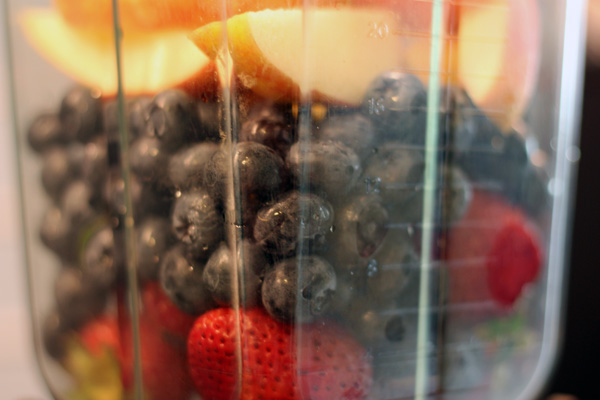
First, add your fruit to the blender. Include a pectin-rich fruit, like apple.
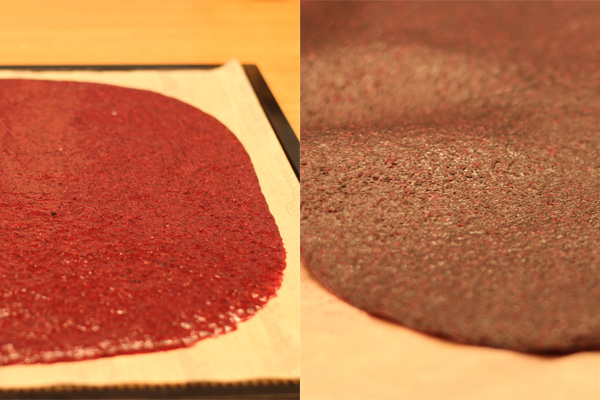
Before and after: Pour on a silicone-lined tray and spread to about 1/4 inch thick. Dehydrate for 4-12 hours, checking once in a while.
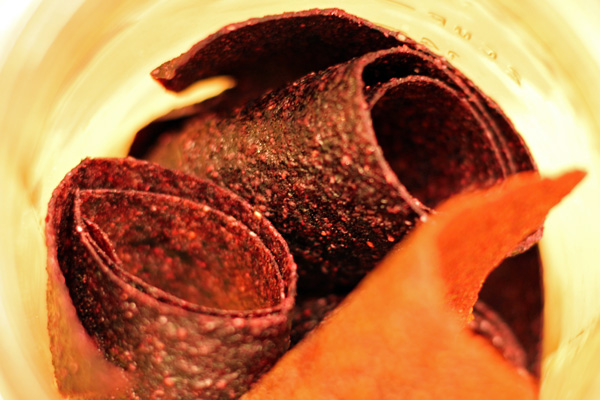
Roll it all up and save in an airtight container away from direct sunlight. If not eating within the month, consider freezing.
- Crackers in the dehydrator are a wonderful way to use the pulp left behind when making your own plant milk. Mix together the leftover pulp with a bunch of herbs, ground flax, some other chopped seeds (pumpkin or sunflower), and a bit of salt and pepper. Perhaps add a dash of hot sauce! Roll thinly over your silicone-lined tray and dehydrated until crackling. You could even mix some leftover cooked lentils or pureed cooked vegetables in there! A great way to give random leftovers a second life.
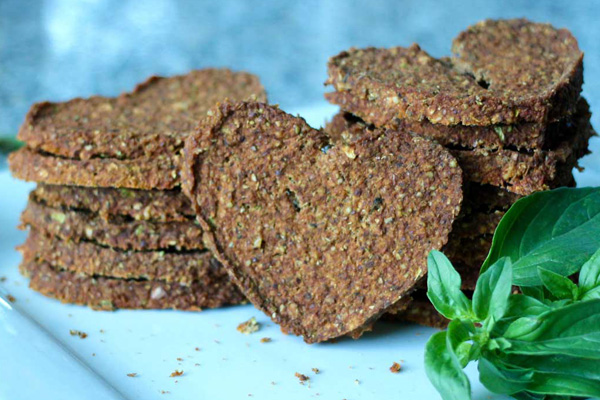
Pizza crackers from the Vegan Dollhouse
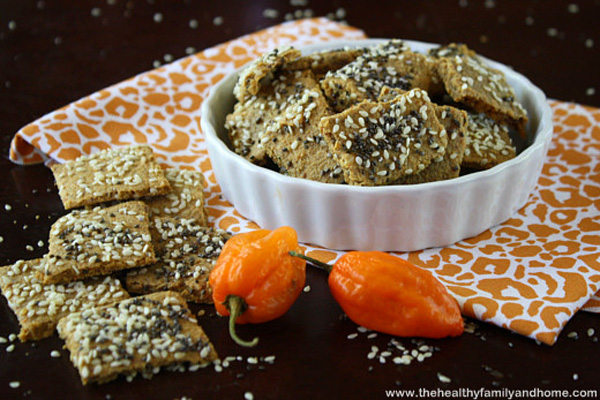
Raw vegan habanero pepper crackers from The Healthy Family and Home
- Vegan jerky! Just because we’re vegan doesn’t mean we don’t like chewing on stiff and salty protein-rich chunks. You can make jerky with tofu and seitan. Just marinate in your favorite flavorings; a combination of soy sauce, balsamic vinegar, liquid smoke (hickory), and maple syrup comes to mind. Then dehydrate to your liking. (If not completely dry, remember to refrigerate.) You can find some more ideas here.
- Leftover anything (vegan): when we have leftover chili or curry, I spread it in a thin layer on silicone-lined trays and dehydrated until completely crisp. I then pack them in vacuum-sealed bags and toss them into our emergency food stash. When we go camping, I have home-made vegan camping food to choose from. If there are too many big chunks in the leftovers, I may blend them a bit before pouring onto the trays.
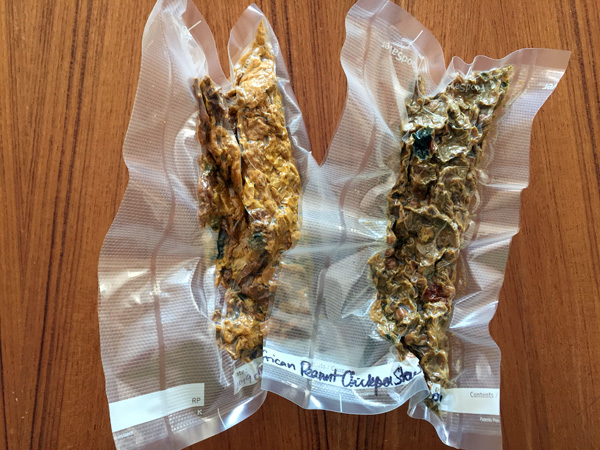
- Cookies: the raw-vegan crowd is super creative and many create some irresistible-looking recipes for the dehydrator. Check out these chocolate cookies from Blender Girl.
Aside from food, the dehydrator is great to dry out crafts when your kids poured too much glue and books that have inadvertently gone for a swim.
How long will vegan food need to dehydrate for?
How long you need to dehydrate your vegan food for depends on so many factors, starting with the humidity content of your food, the thickness of the pieces, the temperature, and the ambient humidity. I live on the Wet Coast so dehydrating foods in the winter can take twice as long as some recipes suggest. Keep on experimenting.
You’ll know it’s done and safe to store at room temperature when the food is completely crisp, but not everyone likes their food to be that dry. If you’d rather keep your fruit a bit more chewy, you should probably keep your bounty in the refrigerator or freezer, in an airtight container.
Great for vegans with raw fruit allergies
Some people are intolerant to raw fruit – and that’s a really sad thing, because they’re stuck with eating only soft, cooked fruit. Unless, like coach Karina, they have a dehydrator: “I’m severely allergic to raw fruit, so I have to cook it all before I eat it. So that I don’t have to rely only on cooked fruit mush, often I’ll bake apple slices to heat them through, then dehydrate them for delicious and chewy treats. I also often make fruit leather.”
View this post on Instagram
Storing the dehydrated vegan food
If you manage to get to those delicious dehydrated bits before your kids, you’ll have to store the bounty for later. For most of it, I use airtight Mason jars (with the metal lids, as the plastic lids let air seep through). If its going to be kept for more than a month or two, then I freeze. For my emergency food supply (see above), I use a vacuum packing machine.
A few days after storing, inspect the food and containers. If there is any sign of moisture, you have to put it back in the dehydrator, or consume immediately.
Before consuming, always inspect the food visually and by smelling. If there are any signs of mold or rot, throw it all away. (Sorry! But it’s not worth it.)
Vegan dehydrator resources
Vegan dehydrating is a pretty small niche, and unfortunately there are few vegan-specific resources to help you master this tool.
- The one book you want to have is… the one that came with your dehydrator. Make sure to read it from cover to cover and learn the basics about operating your small appliance, including a rough idea of operating temperatures, and beginner recipes.
- dryingallfoods.com is a site that describes drying methods for many fruit and vegetables.
- For more elaborate recipes, as far as I know, there is no plant-based dehydrator book, but I found Dried & True book by Sara Dickerman inspirational. She suggests many yummy-sounding flavor combinations and techniques to integrate dehydrated foods into other meals to boost umami. (Too bad she uses meat, but many techniques would work great with veggie burgers, beans, tofu, seitan, etc.)
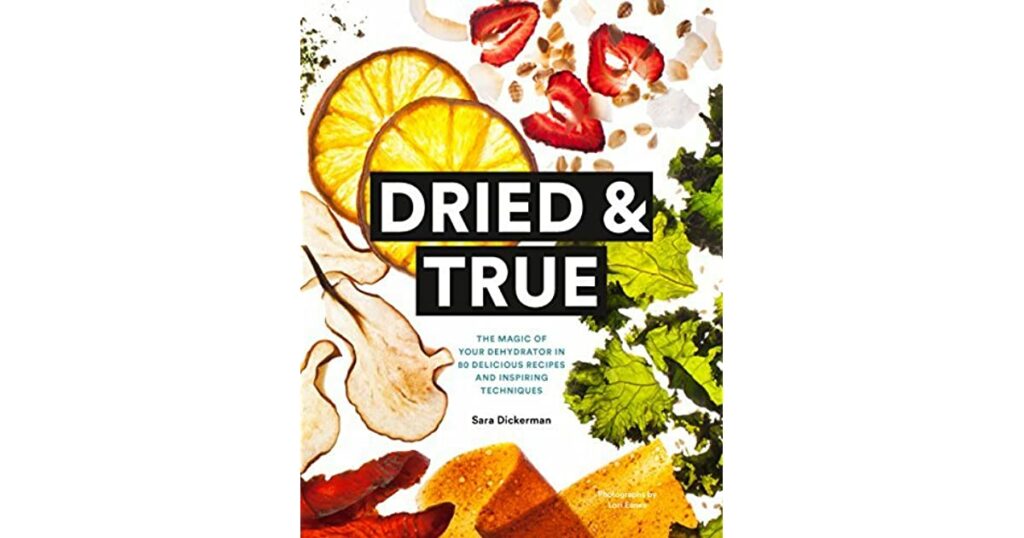
Bottom line: to buy or not to buy a dehydrator? A vegan’s perspective.
If you have a good spot to put it, and the funds to buy one, I’d say buying a dehydrator is a good idea for a vegan. On my priority list for small kitchen appliances, it would come in fourth or fifth position. My top 1 and 2 are a high-power blender and a solid food processor. Then there’s the electric pressure cooker (Instant Pot). I think the dehydrator would come before the stand mixer (but that might be because I don’t bake much). I do not have an opinion on air fryers yet, but those would certainly compete with the dehydrator for space.
I find that dehydrated fruit and roll-ups are a fantastic way to round up lunchboxes and packable snacks for the kids, without creating a mess.
And the capacity to create home-made crackers from leftover plant milk pulp (without firing up the oven) matters a great deal to me. I love home-made soy milk, but if I didn’t have an outlet to use the leftover fiber, I don’t think I would make it quite as often.
I should add that it is possible to dehydrate your food in a regular oven, particularly a convection one. Usually, however, the minimum temperature on ovens is around 170 degrees Fahrenheit, a bit more than ideal for dehydrating. For us, the bigger problem would be that dehydrating ties up the oven for hours, and we need it to prepare dinner. Having a separate dehydrator is key if you’re going to make a lot of those fruity vegan treats.
The best way to get started might be to ask around your circle of friends and neighbors for someone who has a dehydrator. Would they mind loaning it to you? Unless they are a power-user, chances are they’ll be fine letting it go for a week or two. Run a few experiments of your own and decide whether you should buy your own. If you’re lucky, maybe they’ll offer to sell it to you for a song (or a fraction of your dehydrated bounty!).
Did you buy a dehydrator? What do you use it for? Share your best ideas in the comments.


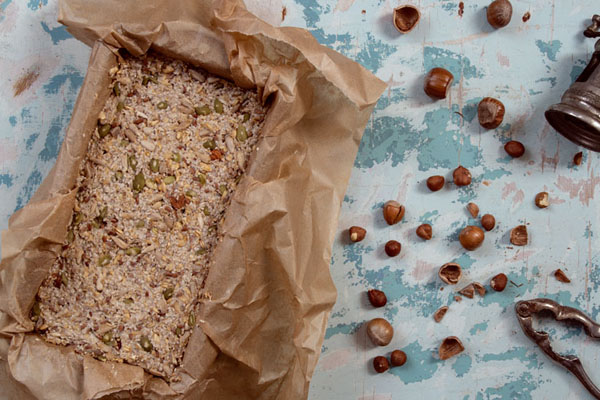
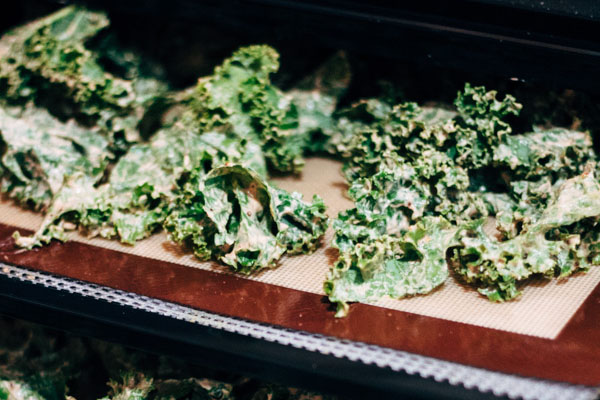

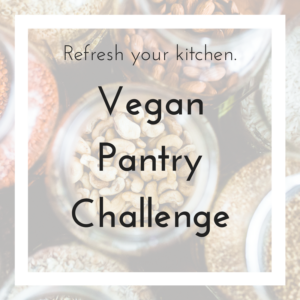
Perfect timing! Our six-tray Nesco round food dehydrator (as you picture above) is new and busy this year. We have the fruit roll-up sheets as part of the initial kit.
We have a prolific apple tree on a new-to-us lot. And a large kitchen garden. The last two weeks? Peak tomato, apple, and Concord grape harvesting season. All at once. Keeps us busy. And we love that the dehydrator works overnight as we sleep.
We do a combination of dehydrating and freezing for long-term storage. Our raspberries, we freeze on waxpaper trays before bagging. We use the same technique with apples and tomatoes so they aren’t just one big frozen lump. Makes it easier to portion out what is needed at the time of use.
A brother-in-law is our family’s canner. Seemingly at near industrial scale. But we find dehydrating and freezing faster and easier. And we still enjoy canned goods through familial generosity.
We’ll try some of your suggested recipes as we’re just getting into dehydrating this year. The vegan jerky and fruit roll-ups both sound great. And dehydrated strawberries and watermelon! Great and timely article.
Hi Daniel! Your kitchen sounds like the place to be this weekend! I wish I had a big freezer to freeze fruit individually like that before bagging. That’s the way to do it! I hope your brother has some quince to make preserves from, they are SO good. Let me know how you like the watermelon slices.
Thank you for talking sense to me re: owning a dehydrator. The process of dehydrating sounds intriguing (and fun), but realistically I do not have the space for one in my tiny house. Sometimes I need to be reminded of that from a voice of reason. I appreciate your article.
Thank you Wendie for leaving this comment, it makes my day to think that my post might save you from clutter. 🙂 If you have a local Buy Nothing Project group, or a Tool Library, you might be able to borrow/rent a dehydrator for a few days of the year when you might need one. Get organized to do all your dehydrating at once and then you’re good for a few months.
can anyone direct me to more of a savoury dehydrator “bread” site.. im more of a savoury person,. crackers are ok.. but im interested in having hummus and salad type things to roll up and eat.. and maybe use veg pulp from juicers or blenders with a bit of psyllium or whatever…. I want to know if it is yummy.. if it is yummy it looks reasonably easy .. if it’s just chewy cardboard.. not so much.. fruit leather I would eat but probably not care to make . I like sweet things sure.. but I can eat fruit.
Thanks for dropping by Lisette! I’m sorry I don’t have recipes to make “rolls” from pulp. This said, if you want to make it tasty, you’ll have to up the seasonings. Also note that when you are using vegetable pulp, a lot of the flavor, sweetness, and nutrients have gone with the juice. Lots of herbs and spices should help make it enjoyable.